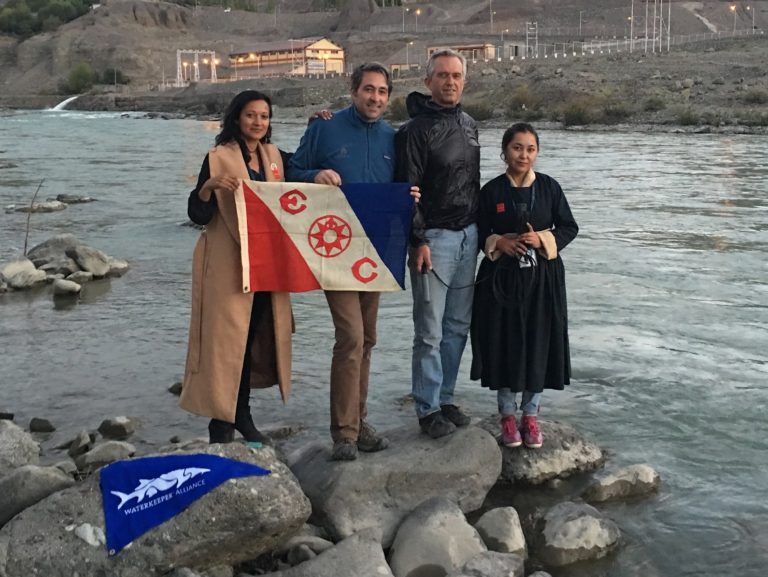
With all of the negative energy, fake news, trolling, hate speech and more invading our daily lives, it is refreshing to take some time to focus on people who are working together to create positive change. Just a few months ago, I was in Ladakh, India. A small Waterkeeper team had traveled to the Himalayas for the festival of Naropa. Under a bright blues sky in a field outside of Hemis monastery, I sat in a massive sea of more than 300,000 Buddhists who were listening to our President Robert F. Kennedy, Jr., talk about clean water and citizen action. The crowd was engaged and heard the urgent call to protect these vital Himalayan water resources.
The perilous impacts of climate change in the Himalayas have been unfolding with alarming fury. Home to the largest field of glaciers outside of the polar caps, this “Third Pole” feeds the giant rivers of Asia that support four billion people, nearly half of humanity. Encompassing territories in China, Myanmar, Bhutan, Nepal, India, Pakistan, and Afghanistan, the Himalayan range is home to some of the most famous rivers in the world including the Indus, Ganges, Yangtze, Brahmaputra, Mekong, Irrawaddy, Syr Darya, and the Yellow River. Tragically, plastic litter besieges the region’s rivers and tributaries and extreme weather events devastate many of its communities.
The theme reverberating throughout the once-in-12-year festival of Buddhist spirituality, culture and tradition was loud and clear: we need strong action and creative solutions now to stop the destruction of the majestic Himalayan glaciers. The setting for Naropa 2016 in Ladakh is doubly symbolic, as it is the home of the patron saint of the Drukpa lineage, and it is a region that is suffering from the intensifying effects of pollution and diminishing quality and quantity of glacier water. Increasingly, people are suffering from ill health due to toxic particles in their drinking water that comes directly from the rivers without filtration. Communities are suffering from an increase in devastating flash floods, or ‘Himalayan tsunamis’ from extreme weather events or ‘cloud bursts’, and rapidly melting glaciers. Devastating glacier lake outbursts also are increasing in impact. Moreover, rapid deforestation in the region has increased the damages to communities from storm and flood waters.
With these growing threats, the message coming out of Naropa was one of action and hope, and many already have mobilized to take action. Recently, 500 Drukpa lineage “Kung Fu Nuns” bicycled 2,500 kilometers from Kathmandu to Ladakh to promote awareness of the melting Himalayan glaciers and gender equality. Moreover, the Naropa festival culminated with a 10-day-long “eco padyatra” with thousands of monks, nuns and volunteers trekking into Ladakh’s interiors to create awareness about the hazards of non-biodegradable waste while picking up discarded bottles, wrappers and cans along the way. To date, Drukpa nuns and thousands of trekkers have picked up over two tons of plastic waste that litters land and waterways.
Together, we are partnering to grow a Himalayan Waterkeeper movement and train a network of 50 clean water advocates over the next year, including Drukpa nuns, monks, and youth groups in India, Nepal, and Bhutan. These grassroots advocates will monitor water quality, investigate and solve pollution problems and demand climate action now. This deep commitment to educating and empowering the region’s residents with information and solutions to protect their precious waterways raises great hope for the future.
It will take grassroots movements like this and more to force action on this crisis. And we must do it together to help overcome the negative forces that foster a world fueled by greed. Working to find and eliminate sources of pollution, educate the public, and demand climate action, we endeavor to end the loss of life and livelihoods from pollution and extreme weather events. Throughout this journey, we must remember that nothing is impossible when we walk together.